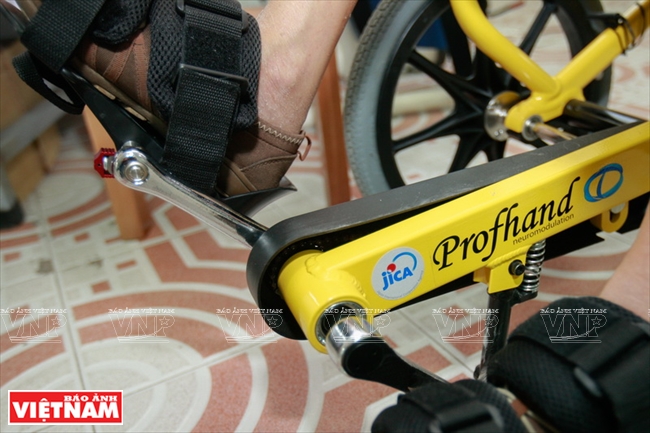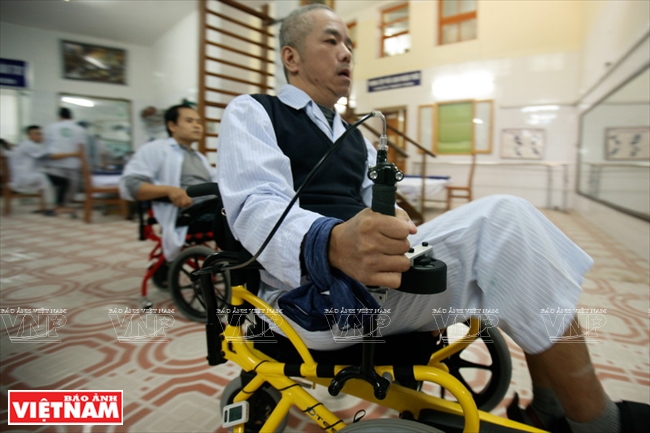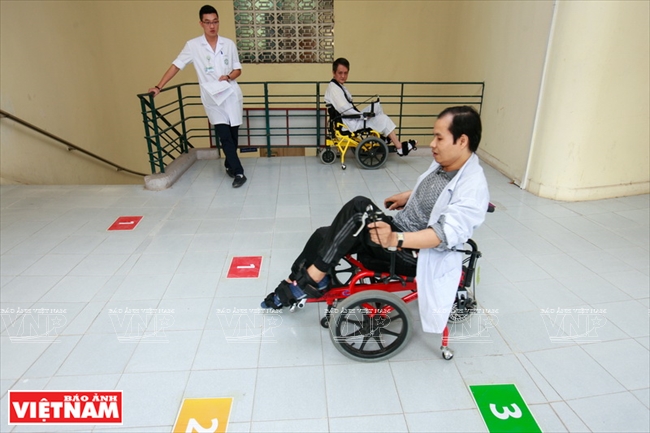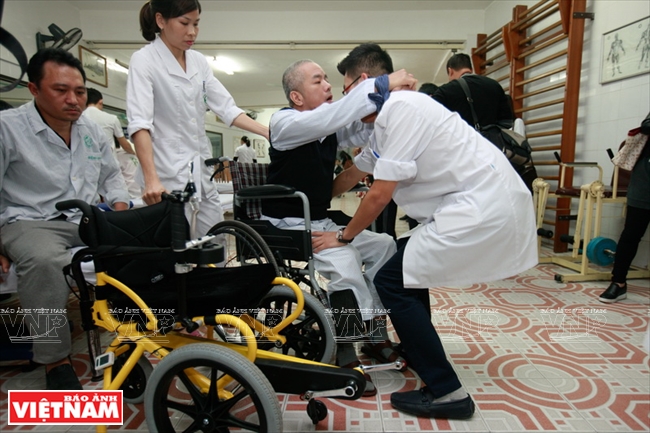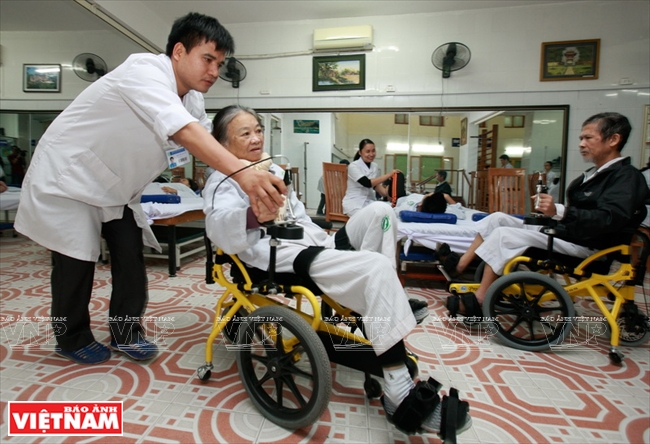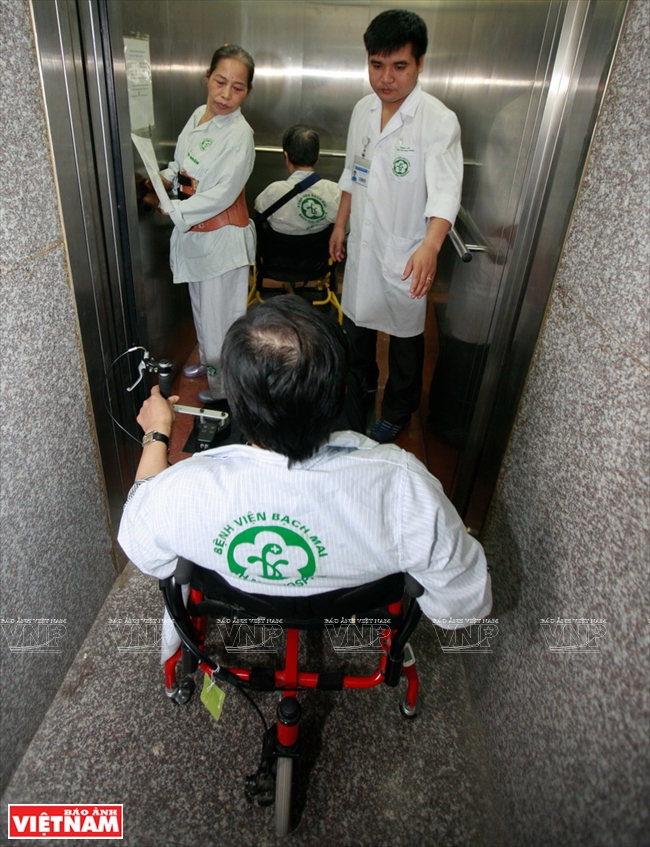The chair, commonly known as COGY, has been a part of the JICA (Japan International Cooperation Agency) partnership project since 2014 that helps to restore a patient’s physical capabilities.
The wheelchair has pedals that can be used even if one of the patient’s legs is paralysed. By pedalling with a good leg, it stimulates the other leg to move as well.
“The target of the project is to build a platform to help people with physical disabilities to get access to advance treatment,” said Luong Tuan Khanh, director of Bach Mai Hospital’s rehabilitation centre, which first applied the Cogy in Vietnam on a trial basis.
Besides Bach Mai Hospital, which was provided with four COGY wheelchairs, the wheelchairs were also provided to other hospitals such as C and Rehabilitation hospitals in Da Nang, Cho Ray Hospital in Ho Chi Minh City, Rehabilitation Hospital in the province of Ha Tinh, Hai PhongRehabilitation Centre and Hospital forRehabilitation & Professional Deaseas ( in Ho Chi Minh City).
According to Kenji Suzuki, representative director of TESS, the company that manufactures these chairs, TESS has been working hard to promote this innovative product in Vietnam where the number of people with disabilities due to occupational accidents is rising. With the Gogy, patients can both move on their legs and do exercise to maintain the power of their muscles.
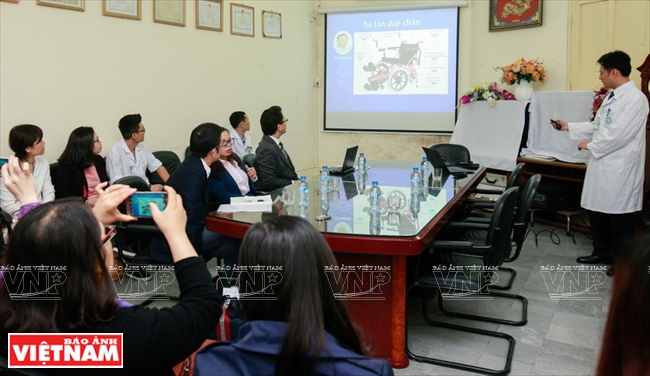
A COGY instruction meeting
|
| The Ministry of Health has granted a certification to the project to use the COGY as a new type of rehabilitation equipment in Vietnam. The paper will help people with physical disabilities in Vietnam to get access with one of the most advanced rehabilitation methods in the world. |
TESS is a small company and developed the wheelchair jointly with Tohoku University. The company sold the wheelchair in 2009, which weighed 80kg and was priced at 1.3 million yen (11,140 US dollars). Accumulated improvements since then have lowered the weight to 14kg and cut the price to under 400,000 yen (3,500 US dollars).
In Bach Mai Hospital’s Rehabilitation Centre, patients will exercise to enhance their muscle’s ability and then be trained on the COGY for about 30-45 minutes. After that, they can control the wheelchair by themselves. As a part of the rehabilitation program, patients are also checked on the connection between their brain and muscles.
“I have tried the COGY for ten days and now I can walk again with a cane. Before I came here, I was almost paralysed,” said 61-year- old patient Pham Dinh Quang, who suffered from a severe stroke.
Under the rehabilitation process, after 20 days of training, doctors will check the rehabilitation development of patients in order to decide on further training.
After three years of using COGY, as many as 60 patients with strokes were trained and recovered at Bach Mai Hospital’s Rehabilitation Centre./.
Story: Ngan Ha – Photo: Viet Cuong

